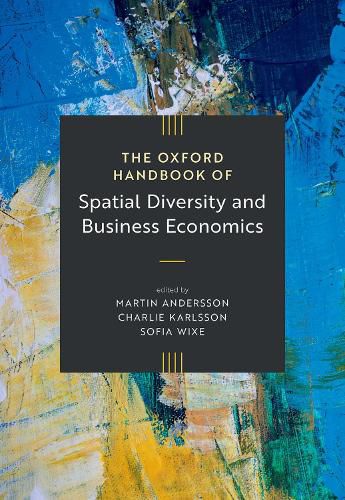Readings Newsletter
Become a Readings Member to make your shopping experience even easier.
Sign in or sign up for free!
You’re not far away from qualifying for FREE standard shipping within Australia
You’ve qualified for FREE standard shipping within Australia
The cart is loading…






The Oxford Handbook of Spatial Diversity and Business Economics provides academics, researchers, and advanced students in various disciplines - such as business, economics, and geography - with an overview of the role of diversity in modern advanced economies. For a long time, research from different areas has suggested that diversity is a critical factor in creativity, knowledge generation, innovation, and entrepreneurship at the level of organizations, cities, regions, and whole countries. The chapters in this handbook deal with some of these issues in different ways and add to the existing knowledge on the role of diversity for various economic phenomena. The 16 chapters are organized into the following sections: 1) Diversity and place development: theory and policy development, 2) Workforce and labour market diversity, 3) Diversity and entrepreneurship, and 4) Regional diversity, innovation, and productivity. Furthermore, the introductory chapter of the book provides an overview of some of the main arguments on diversity in theoretical as well as empirical literature that puts the chapter contributions in context.
$9.00 standard shipping within Australia
FREE standard shipping within Australia for orders over $100.00
Express & International shipping calculated at checkout
The Oxford Handbook of Spatial Diversity and Business Economics provides academics, researchers, and advanced students in various disciplines - such as business, economics, and geography - with an overview of the role of diversity in modern advanced economies. For a long time, research from different areas has suggested that diversity is a critical factor in creativity, knowledge generation, innovation, and entrepreneurship at the level of organizations, cities, regions, and whole countries. The chapters in this handbook deal with some of these issues in different ways and add to the existing knowledge on the role of diversity for various economic phenomena. The 16 chapters are organized into the following sections: 1) Diversity and place development: theory and policy development, 2) Workforce and labour market diversity, 3) Diversity and entrepreneurship, and 4) Regional diversity, innovation, and productivity. Furthermore, the introductory chapter of the book provides an overview of some of the main arguments on diversity in theoretical as well as empirical literature that puts the chapter contributions in context.